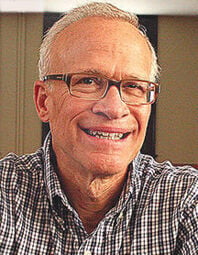Summary
Americas oldest workers keep clocking in many despite health issues and disabilities. And some cant afford to retire. We talked to nearly 200.
Source: business-insider-markets

AI News Q&A (Free Content)
Q1: What are the common health issues faced by elderly workers in America, and how do these issues impact their ability to work?
A1: Elderly workers in America often face health issues such as chronic diseases, disabilities, and cognitive impairments, which can impact their ability to perform job functions efficiently. Despite these challenges, many older workers report enjoying their work and finding that it positively affects their mental and physical well-being. However, health conditions can limit job opportunities and influence retirement decisions. Research suggests that healthier older workers are more likely to remain in the workforce, highlighting the connection between health and employment among seniors.
Q2: How does the aging population in America affect the workforce, and what measures are being taken to address these changes?
A2: The aging population in America has led to a slower workforce replacement rate as retirees outnumber new workforce entrants. This demographic shift poses challenges such as labor shortages and increased demand for skilled workers. Measures like industrial automation and initiatives to retain skilled workers from other states are being implemented. Additionally, there is a focus on integrating older workers by creating flexible work environments and offering opportunities for skill development to keep seniors engaged in the workforce.
Q3: What role does employment play in the health and well-being of older adults?
A3: Employment plays a significant role in maintaining the health and well-being of older adults. Continuing to work can help sustain physical, cognitive, and emotional health, providing structure, social interaction, and a sense of purpose. Many older workers report that employment helps keep their minds sharp and fosters social connections, contributing positively to their overall health and life satisfaction. Employers are encouraged to support older workers by creating inclusive environments and providing accommodations for health-related needs.
Q4: What are some of the primary challenges faced by seniors in retirement, and how do these challenges affect their financial security?
A4: Seniors in retirement face numerous challenges, including unexpected health issues, financial instability, and the need for long-term care. Many older Americans lack the financial resources to handle sudden expenses, leading to economic insecurity. Rising healthcare costs and insufficient retirement savings exacerbate these issues. As a result, a significant portion of the elderly population struggles to maintain financial security, with many relying on Social Security benefits that may not fully cover their needs.
Q5: What is the significance of the Total Worker Health approach for older workers, and how does it address their specific needs?
A5: The Total Worker Health approach emphasizes the importance of creating safe and supportive work environments for older workers. It addresses workplace issues such as physical and psychosocial risks, which can threaten the safety and well-being of employees. By focusing on the intersection of work and health, this approach aims to mitigate hazards, improve working conditions, and enhance the overall health outcomes for older individuals. Employers are encouraged to adopt policies that support the diverse needs of an aging workforce.
Q6: How does the longevity of the population influence the prevalence of long-term illnesses among retirees, and what are the implications for retirement planning?
A6: As the population's longevity increases, the prevalence of long-term illnesses among retirees also rises. This trend necessitates careful retirement planning to accommodate potential health care needs. Many retirees face unexpected health challenges that can disrupt their financial stability, making it crucial to have sufficient savings and insurance coverage. The likelihood of requiring long-term care services, which are often not covered by Medicare, further complicates retirement planning, emphasizing the need for early financial preparation.
Q7: What innovative solutions are being proposed to support the mental and social well-being of elderly individuals, particularly those experiencing loneliness and isolation?
A7: Innovative solutions like AI-based conversational companions, such as ChatGPT, are being developed to support the mental and social well-being of elderly individuals. These systems aim to reduce loneliness and social isolation by providing companionship and engaging interactions. Preliminary studies have shown that such systems can effectively generate relevant responses and improve the quality of life for older adults. However, considerations around privacy, potential biases, and ethical implications must be addressed when implementing these technologies.
References:
- Aging of the United States
- The Urgent Need
- The Most Common Disruptions Faced by Seniors in Retirement
- Addressing the Nation's Retirement Crisis
- Employment can provide older workers with substantial benefits
- Total Worker Health
- National Poll on Healthy Aging





